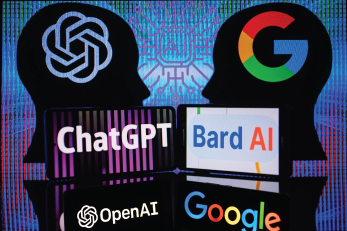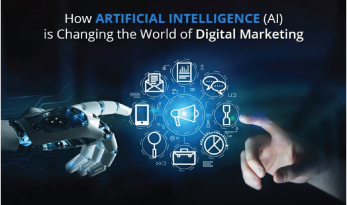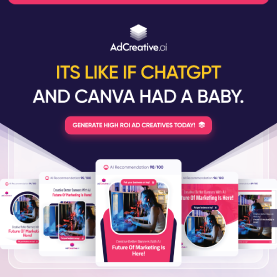In today’s fast-paced digital world, artificial intelligence (AI) is transforming the way businesses connect with their audience. Companies that embrace AI in their marketing strategies are better equipped to personalize customer experiences, optimize campaigns, and stay ahead of the competition. This guide will walk you through designing an AI-powered marketing strategy, providing you with a clear blueprint for success.
Understanding the Basics of AI in Marketing
Artificial intelligence refers to technologies that enable machines to mimic human intelligence, such as learning, problem-solving, and decision-making. In marketing, AI empowers businesses to analyze vast amounts of data, predict customer behavior, and deliver tailored experiences.
Key AI technologies in marketing include:
- Machine Learning: Algorithms that learn and improve from data to make predictions or decisions.
- Natural Language Processing (NLP): Enables machines to understand and generate human language, used in chatbots and sentiment analysis.
- Predictive Analytics: Tools that forecast future trends based on historical data.
Examples of AI-driven campaigns:
- Personalized product recommendations from e-commerce platforms.
- Chatbots providing instant customer support.
- Social media sentiment analysis to gauge customer opinions.
Assessing Your Current Marketing Needs
Before integrating AI, it’s essential to evaluate your existing marketing strategy to identify areas where AI can create the most impact.
Steps to assess your needs:
- Identify Gaps: Determine which parts of your marketing strategy need improvement, such as lead generation, customer segmentation, or campaign personalization.
- Set Goals: Define what you want to achieve with AI, such as increasing conversion rates, improving customer engagement, or reducing costs.
- Evaluate Resources: Assess your team’s technical skills, available budget, and existing tools to ensure a smooth transition.
Choosing the Right AI Tools and Technologies
The success of your AI marketing strategy depends on selecting the right tools and technologies that align with your goals.
Popular AI tools for marketing:
- Chatbots: Automate customer service and engagement.
- Recommendation Engines: Deliver personalized product or content suggestions.
- Sentiment Analysis Tools: Monitor customer feedback on social media or reviews.
How to choose the right tools:
- Identify features that address your specific needs.
- Ensure compatibility with your existing marketing platforms.
- Consider scalability to support future growth.
- Factor in cost and return on investment (ROI).
Designing Your AI Marketing Blueprint
An effective AI marketing strategy begins with a well-thought-out blueprint. This involves mapping your customer journey and identifying where AI can enhance the experience.
Steps to create your blueprint:
- Map the Customer Journey: Outline each stage, from awareness to purchase and retention, and pinpoint AI opportunities.
- Personalization Strategies: Use AI to segment your audience and deliver customized messages or offers.
- Leverage Data: Collect and analyze customer data to uncover insights that guide your campaigns.
- Integrate AI Tools: Ensure seamless integration with CRM systems, email platforms, and analytics tools.
Implementation and Execution
Once your blueprint is ready, it’s time to implement your AI marketing strategy. This phase requires careful planning and collaboration across teams.
Steps for successful implementation:
- Start Small: Test AI tools on a specific campaign or segment to evaluate their effectiveness.
- Train Your Team: Provide training on how to use AI technologies and interpret insights.
- Monitor Progress: Track performance metrics to identify areas for improvement.
Avoiding pitfalls:
- Don’t over-rely on AI; balance automation with a human touch.
- Address data privacy concerns to maintain customer trust.
Measuring Success and Optimizing Your Strategy
Regularly evaluating your AI marketing strategy is crucial to achieving long-term success. Use data-driven insights to refine your approach.
Key performance indicators (KPIs):
- Conversion rates
- Customer engagement levels
- ROI of AI tools
- Customer satisfaction scores
Optimization tips:
- Use A/B testing to compare AI-driven campaigns.
- Analyze customer feedback to identify pain points.
- Continuously update algorithms to reflect changing trends.
Staying Ahead in the AI Marketing Landscape
The field of AI is constantly evolving, and staying informed about emerging trends can help you maintain a competitive edge.
Emerging trends in AI marketing:
- Voice search optimization
- AI-generated content creation
- Predictive customer journey mapping
Ethical considerations:
- Ensure transparency in how AI is used.
- Prioritize data security and privacy.
- Avoid biases in AI algorithms.
Conclusion
Integrating AI into your marketing strategy can unlock new levels of efficiency, personalization, and customer satisfaction. By understanding the basics, assessing your needs, and following a clear blueprint, you can design an AI-powered marketing strategy that drives success. Start small, measure results, and stay ahead of trends to fully harness the power of AI in marketing.
With this guide, you’re well-equipped to embark on your AI marketing journey. Ready to take the next step? The future of marketing awaits!


